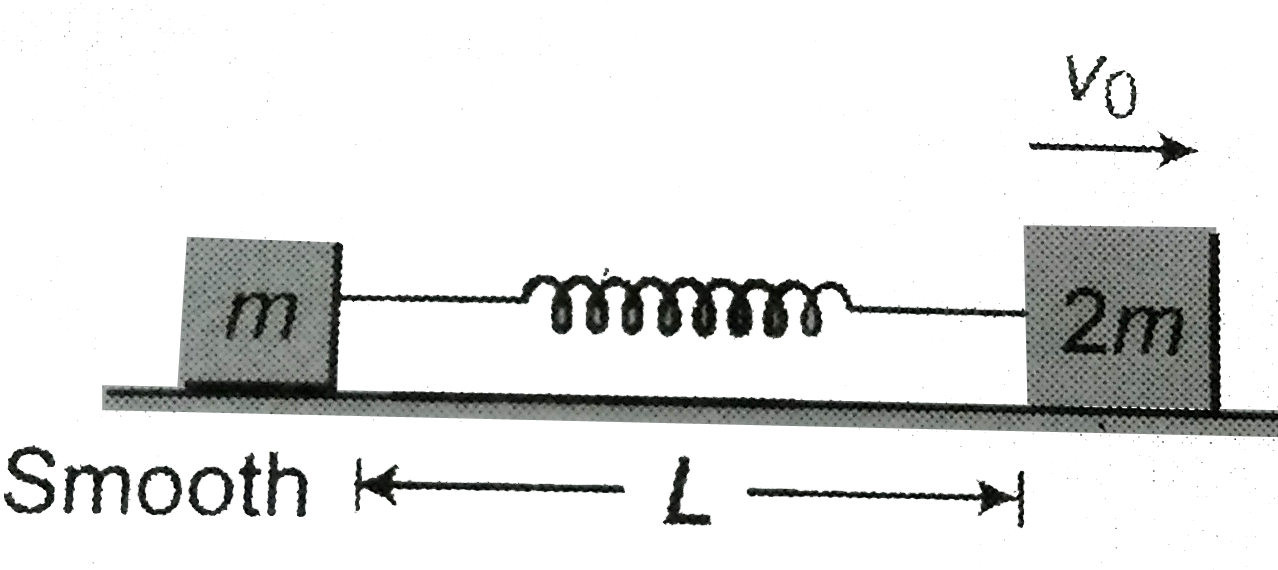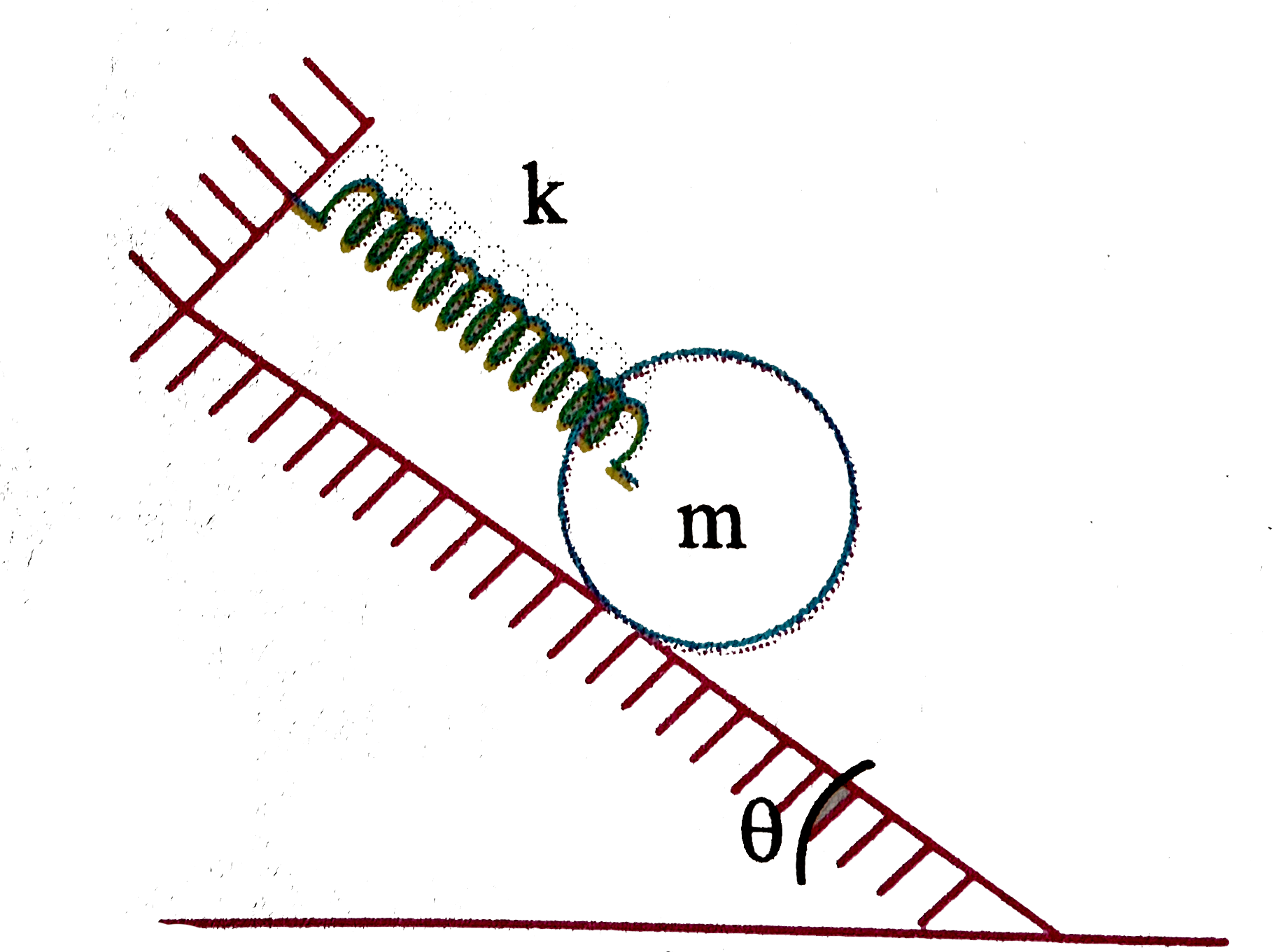In the previous problem , the maximum elongation of the spring is
2cm
3cm
2√3cm
2√5cm
The correct Answer is:C
1×0.4=(3+1)v⇒v=0.1m/s
12×1×(0.4)2=12(3+1)v2+12kx20
x0=2√3cm

Topper's Solved these Questions
Similar Questions
Block of mass 2m is given v0 towards the right. If L is the natural length of spring constant k, find the maximum elongation of the spring.
 View Solution
View SolutionA block of mass 5kg having charge q is attached to a spring of constant K=104N/m. A charge −q is placed below the block at separation 0.5m. If the maximum elongation of spring is 0.5m. If the maximum elongation of spring is 0.1m, find q. Assume the initial elongation of spring is zero.
View Solution
Knowledge Check
- Question 1 - Select One
In the previous problem , the maximum loss in K.E. will be
A12mv20B13mv20C23mv20D34mv20 - Question 2 - Select One
In the previous problem , the maximum height attained by the ball and the distance traveled by the block , after collision will be
A2L9,4L9B4L3,L3C4L9,L9DL9,2L9 - Question 3 - Select One
In the previous problem, the maximum horizontal distance will be
A160√3mB140√3mC120√3mD100√3m
The block of mass m is released when the spring was in its natrual length. Spring constant is k. Find the maximum elongation of the spring.
 View Solution
View SolutionA disc of mass m is connected with an ideal spring of stiffness k. If it is released from rest, it rolls without sliding on an inclination plane. The maximum elongation of the spring is:
 View Solution
View SolutionIn the previous problem, the velocity of the shell will be
View SolutionIn the previous problem, the temperature of the isothemal process is how much lower the maximum temperature :
View SolutionIn previous problem, the angle of dip is
View Solution

